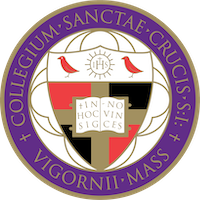Athens is known for being the birthplace of democracy. Nearly all modern political ideology and institutions find their roots in the political system of Ancient Athens. Down south, on the island of Crete (Κρήτη), I also got a sense of a strong and central community rooted in tradition across millennia. Crete is the largest and most populated Greek island. It is known for its beautiful beaches (arguably more beautiful than those of Santorini), cultural heritage, and, most importantly, one of the most advanced ancient civilizations: the Minoans.

This trip was a mandatory field study organized by CYA, so it had more specific academic objectives than our optional weekend trip to Chios. My field study focused on the mythology and society of the Minoan civilization while thinking about the traditions and politics of modern-day Crete. Each group went to the same sites, just approached them with different lenses. After a long overnight ferry from Athens, we arrived in Crete’s capital city of Heraklion. Our first stop was the Palace of Knossos. The first time I learned about the Palace of Knossos was in my Introduction to Visual Arts course in my first year at the college. From what I remember, it was a massive and mysterious complex. Still, it had a lot of significance during its time.


The palace was way bigger than I ever imagined from learning about it in class. There are many mythological stories attached to the palace, one being about the Labyrinth and the Minotaur. After exploring the palace for a day, it makes sense why people created such a story. If I weren’t with my group, I would have easily gotten lost: there were multiple entrances, countless rooms, and even more than one story. It’s impressive to see what was left of a civilization so long ago. It makes us think about just how advanced they were back then.
Much of our time was spent discussing the mythological presence in Crete, but we also had the opportunity to learn about modern Cretan (and Greek) politics. We went to the city of Anogia, a mountain village that thoughtfully preserves its deep traditions. I learned that Anogia has a long history of personal vendettas, which are still around today, so be sure not to mess with them. Their village was relatively small, but I could tell it was rich in history, culture, and food. One of the highlights was eating roasted lamb straight off the grill. It was one of the specialty foods of Anogia, and it did not disappoint.
We spent the second half of our trip in a different part of the island called Chania (Χανιά). Unlike most of the time we spent in Heraklion, we focused on the more “modern” aspects of Crete, like its 14th-century Venetian architecture and beautiful beaches. To be fair, we were at the weekend at this point, so after several archaeological sites, museums, and lectures, a beach day was well-deserved. Throughout my travels thus far, I’ve observed such rich traditions and identities. Crete is one of the exemplary places to witness such rich communal identity. It takes a lot of dedication and enthusiasm to have a legacy run so deep it lasts for centuries, even when a small town like Anogia might be at odds, given its size. Overall, it was a very successful trip, and I’m looking forward to the next mandatory field study in the Peloponnese. Γεια σας!







